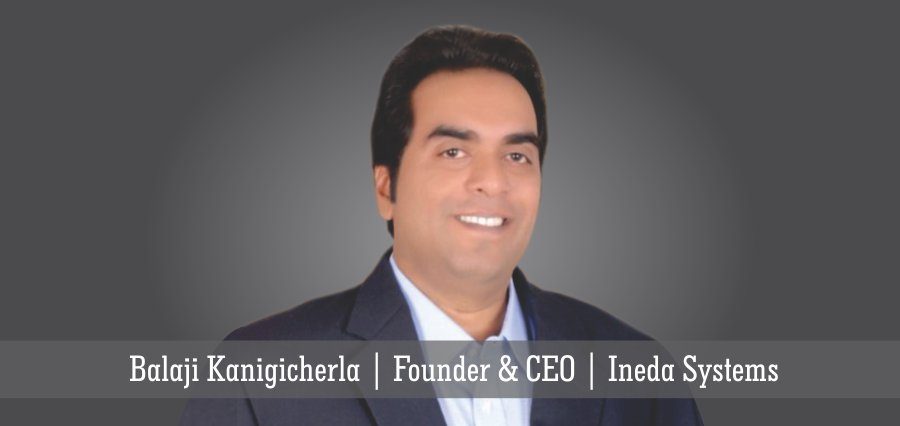Ineda is the pioneer in ultra-low power chips for the IoT and Wearable industry. Ineda’s SoCs are built on a powerful new architecture called Hierarchical Computing Architecture that is aimed at extending the battery life while allowing the devices to be in the always-on condition to achieve contextual computing. It enables optimal use of CPUs, peripherals, accelerators and memory banks based on use cases. Ineda’s SOCs (System On a Chip) are built with end-to-end security in mind for IoT applications.
Most of the companies in India work on parts of chip design process and some specialize in full chip design, but there are no companies in India that can comprehensively design a chip product end-to-end the way Ineda does. Ineda delivers the entire Solution – all the way from product specification to product delivery to customers along with the associated platform and software development kits. While most of Ineda’s competitors work at Board Support Software package, Ineda delivers a full SDK (Software Development Kit) which is application ready and minimizes time to market for productizing IoT solutions. Ineda works with customers and extends the guidance,support & plays a valuable role in prototyping, development and manufacturing stages till the final IoT/Wearable solution is deployed in the market.
Experience usher in Achievers
Balaji Kanigicherla founded Ineda Systems and serves as Chief Executive Officer. Prior to his current role, he held the role of CTO & head of engineering to build a 150+ strong R&D team and led the development of foundation IO-V technology and the industry’s first hierarchical computing architecture. Before Ineda, he was at AMD where he managed 500+ engineer organizations and was program executive. Prior to AMD, he worked at Conexant Systems as a Senior Director managing their Set-Top-Box and Imaging/PC Media silicon engineering teams.
Balaji has also worked in technical/management roles at Silicon Valley startups Ikanos & Velio and was a key member of networking/communication products. Earlier in his career, he was associated with Intel towards their x86 CPU and mobile chip-set engineering product development. He has filed for 20+ patents till date and played the role of a technical advisor for few Silicon Valley startups. He was awarded as Young Entrepreneur of the Year by Silicon India for 2011. He has a Masters degree in Electrical Engineering from Arizona State University.
Challenges leads to Betterment
There are three different types of challenges:
The technology challenge: Low power platforms, cost effective solutions and end-to-end security are the key requirements that will enable the IoT devices to become ubiquitous. Currently there are no purpose built chips and platforms to address the needs of the IoT market. Most of the chips being used in IoT applications are originally built for different applications – like embedded, smartphone etc.
The cost of doing business both for Ineda and its customers: Semiconductor companies require increased capital with the nanometer process technologies. Ineda with their full R&D operations out of India is able to reduce the operating expenses needed and hence the total capital. With Ineda’s application and solution ready/optimized SDK, their customers have a faster time-to-market for their products.
The Competition: Competitors are mostly taking chips built for other applications and re-purposing them to IoT applications. Hence the end products are suffering from battery life and security issues.
Core Values Cemented Ineda
The team-Engineering, Executive Management and Board – all three facets came together with years of hard work to deliver these outstanding products. The board and advisors consist of luminaries from the technology industry- from giants like, Global foundries, Ex-AMD CEO and executives, Qualcomm and Samsung. The executive management team has tremendous experience of working in the semiconductor space and the engineering team also has experience of working with and delivering complex chip products totaling multi billion dollars of revenue. Continuous improvement, perseverance to the end goal and user experience are the three main pillars that kept Ineda and its team of distinguished engineers achieve this success. Winning in the expensive semi-conductor space would have been very difficult if any one of them wasn’t there.
Unique Idea Differentiates Start-ups
Principally speaking – Stay away from the crowd, differentiate yourself with your singular idea. Identify the fiber of your company and stick with it. Solve a problem:The biggest advice would be to find a solution to a problem with a view to unification of ideas in similar space and standardization in mind. Otherwise, all the efforts in creating an innovative solution is lost if there is an absence of acceptance and alignment.
Future Plans with Upcoming Industry Needs
Wearable industry was expected to take off with billions of connected devices, but battery life and lack of differentiating killer use cases lowered the take off down to a level that wearable industry is now a commodity. Every technology player – giant or minnow, trying to solve a problem of IoT- be it power, be it cloud, be it connectivity, data analytics or security to name a few.
Ineda also chose to start with solving the power, security and cost problem. Companies who want to provide effective IoT solutions to customers need to unify several of these solutions as one platform that is user-friendly, cost effective and which is easily deployable. Ineda is taking steps in that direction with their singular focus on delivering to these expectations.
Ineda will be at the forefront of creating new solutions that can enhance the user experience with standardization and alignment. Ineda with its excellent team is well poised to offer this platform to the IoT world. Ineda expects to add more sophisticated connectivity and security features along with being ultra-low power to its list of world beating chips.
Ineda Systems: Enablers of IoT Revolution


